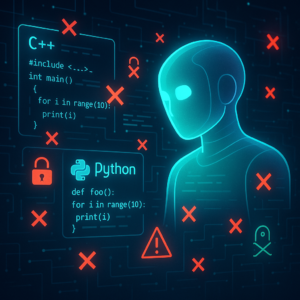Revolutionizing Open-Ended Question Evaluation: The AHP & LLM Symphony

Revolutionizing Open-Ended Question Evaluation: The AHP & LLM Symphony
In a world brimming with information, distinguishing quality responses—especially to open-ended questions—is like finding a needle in a haystack. While AI has made leaps in generating and understanding text, evaluating these nuanced responses is still largely uncharted territory. In a novel study by researchers Xiaotian Lu, Jiyi Li, Koh Takeuchi, and Hisashi Kashima, they propose an intriguing method combining two powers: Large Language Models (LLMs) and the Analytic Hierarchy Process (AHP). But what does this mean, and why should we care? Buckle up as we explore this groundbreaking fusion set to reshape the way we approach open-ended question evaluation, potentially improving hot topics like chatbots and virtual assistants.
Understanding the Terrain: Close-Ended vs. Open-Ended Questions
Imagine you’re at a quiz night and faced with a puzzling riddle—some questions have straightforward answers (close-ended), while others, like “How can we make Monday mornings less dreadful?” elicit a range of creative solutions (open-ended). Evaluating an open-ended question’s response extends beyond checking for correctness; it demands insight into creativity, ingenuity, and practicality. This makes the task complex for people, and even more so for machines.
The Aim: Making Machines Think Beyond ‘Right’ or ‘Wrong’
Question Answering (QA) has long been a staple in AI research, allowing models to demonstrate their breadth of knowledge and logical abilities. Most current models, however, excel only in close-ended QA tasks with clear-cut answers. As our digital interactions become more sophisticated, so must the tools we use to evaluate them. Enter LLMs such as ChatGPT and GPT-4. These models generate text easily, but are notoriously less adept at grading responses for open-ended prompts.
The AHP + LLM Dream Team: A Double-Edged Approach
So, how can we teach AI to better judge open-ended responses? Picture AHP as a judge in a talent show, systematically evaluating contestants based on clear, predefined criteria. AHP breaks down complex decisions into simpler comparative judgments, prioritizing what’s most important. Now, blend this with the linguistic prowess of LLMs, and you get a systematic evaluation framework that’s both thorough and innovative.
Method in the Madness: Two Phases to Understanding
-
Criteria Generation Phase: Think of it as outlining what makes a good answer—it’s about generating the rubrics. Using LLMs, multiple evaluation criteria are created by comparing pairs of answers. This is akin to listing qualities that matter most, like clarity, relevance, or creativity.
-
Evaluation Phase: Once we’ve nailed down the criteria, like a chef balancing flavors, LLMs weigh answers against these standards. It’s here that AHP comes into play, ranking responses using a well-honed method of pairwise comparisons.
The Real-World Impact: Why Should You Care?
This dynamic duo is already showing promise. In experiments with ChatGPT-3.5-turbo and GPT-4 across multiple datasets, this method aligned more closely with human judgments compared to other standard approaches. It suggests that AHP-powered LLM reasoning can significantly enhance AI’s ability to parse complex, open-ended queries, meaning smarter, more attuned virtual assistants in the near future.
Imagine online learning platforms that can evaluate student essays not just for grammar, but also for insight and coherence, or chatbots that offer more personalized and refined customer service by better understanding nuanced inputs. The possibilities are vast!
Key Takeaways
- Innovative Fusion: The combination of AHP and LLMs provides a nuanced framework for evaluating open-ended questions, utilizing systematic criteria.
- Improved AI Evaluation: This method makes AI more attuned to evaluating nuanced human inputs, paralleling how we’d judge them.
- Practical Applications: This can lead to more adaptive AI systems across industries, from customer service to education, offering deeper, more relevant interactions.
- Choosing the Right Approach: While GPT-4 shows improvement over its predecessor in specific tasks, selecting the right technique remains key, especially for challenging prompts.
This study represents a leap towards more sophisticated AI capabilities. With further refinement and adoption, AHP-powered LLM reasoning could well redefine our interactions with technology. Ready for the AI of tomorrow? The stage is set, and the future looks promising!
As AI continues to evolve, insights like those from this study help pave the way for solutions that are both powerful and practical. If this sparks your interest, now might be the perfect time to delve deeper into how these systems could benefit your field or interests. Stay curious, stay informed!
If you are looking to improve your prompting skills and haven’t already, check out our free Advanced Prompt Engineering course.
This blog post is based on the research article “AHP-Powered LLM Reasoning for Multi-Criteria Evaluation of Open-Ended Responses” by Authors: Xiaotian Lu, Jiyi Li, Koh Takeuchi, Hisashi Kashima. You can find the original article here.




